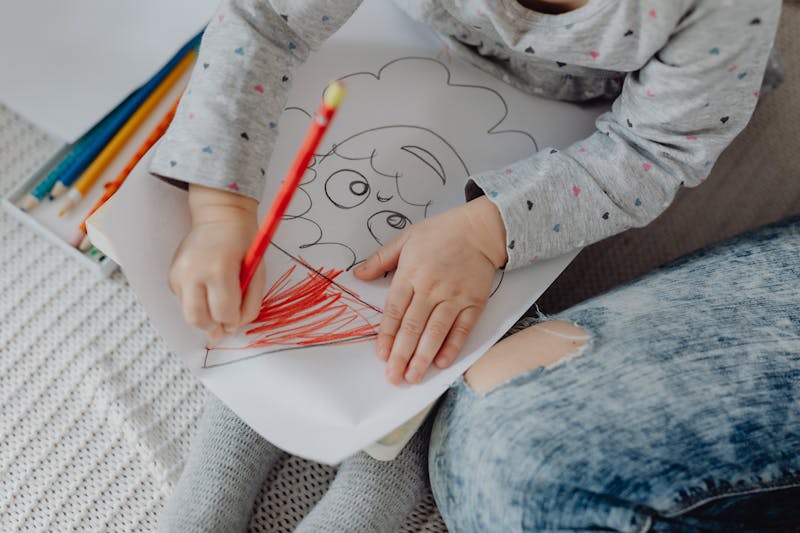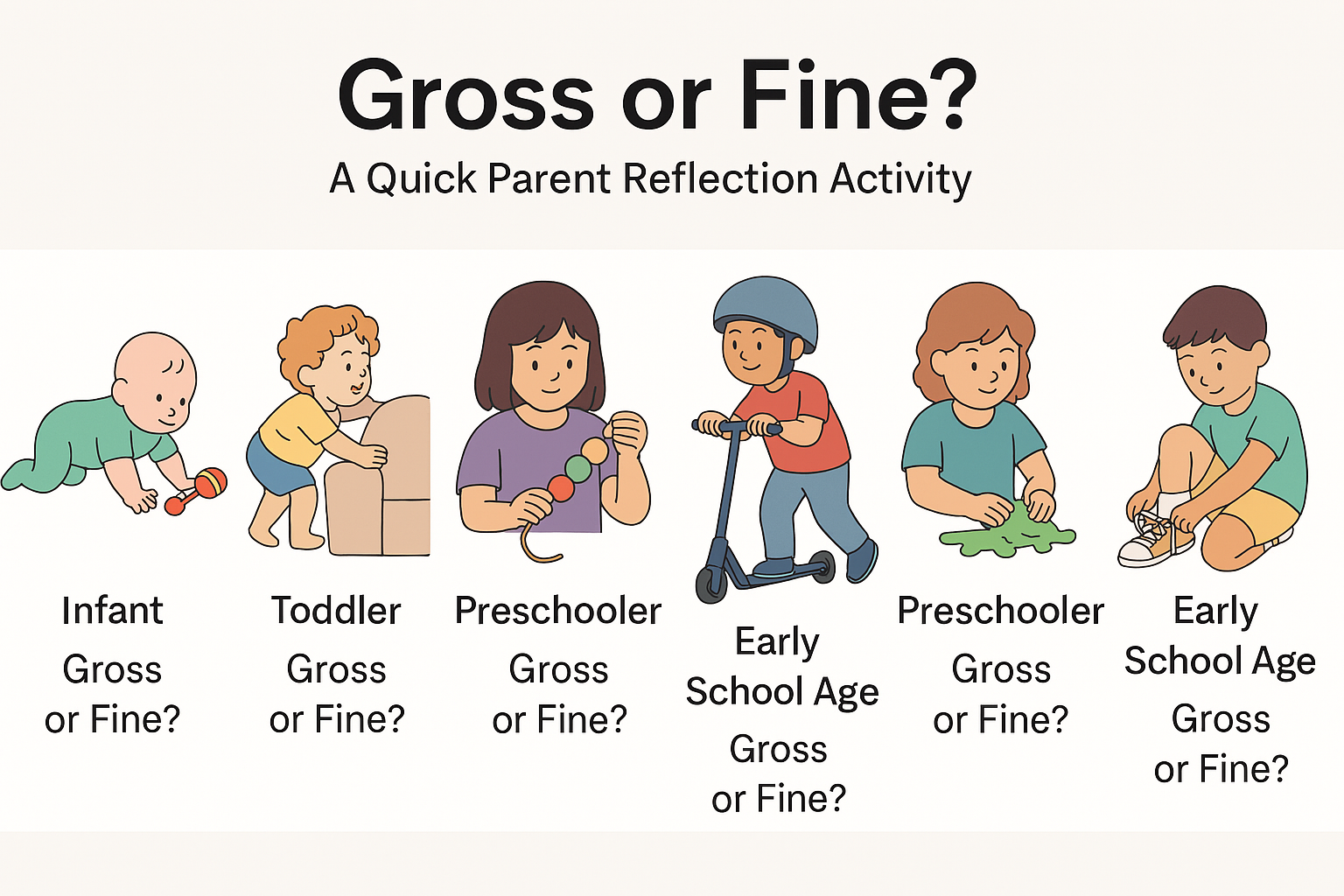Tiny Hands, Big Milestones: Why Fine Motor Skills Matter

As parents, we often cheer when our little ones take their first steps, run across the yard, or climb the playground ladder. These "big moves" make us proud—and rightfully so. But tucked away in the quieter moments of play and self-care are smaller, yet important victories: your toddler buttoning a shirt, holding a crayon, or zipping a backpack. These are signs of fine motor development, an essential part of early childhood growth that often goes unnoticed.
What Are Fine Motor Skills?
Fine motor skills involve the coordination of the small muscles in a child’s hands, wrists, and fingers. These enable children to perform small and precise tasks such as picking up tiny objects, drawing shapes, or turning pages in a book. These skills support independence and are foundational for tasks children will need for school, such as writing, cutting with scissors, and using a computer mouse or touchscreen.
While gross motor skills such as running or jumping seem more important, fine motor development quietly builds the capacity for self-help and academic learning.
Why Fine Motor Skills Matter
Strong fine motor skills are directly linked to a child's ability to complete everyday tasks. Imagine a child who struggles to open a lunch container or hold a pencil properly. These small challenges can lead to frustration, reduced confidence, and reluctance to participate in learning or social activities.
Even more significantly, research shows that fine motor skills in preschool years are predictors of later academic success. One study found that children with well-developed fine motor coordination tended to perform better in reading and math by the end of elementary school¹. That's a powerful reason to pay attention to your child’s finger and hand movements today!
Early Signs and Milestones to Watch
Children develop fine motor skills gradually, and progress can vary from one child to another. Here are some age-appropriate milestones to look out for:
Around 1 year: Grasping small objects with the thumb and forefinger (pincer grasp), banging blocks together.
By age 2: Turning pages in a book, scribbling, feeding with a spoon.
By age 3: Drawing circles, building towers of blocks, using child-safe scissors with help.
By age 4: Buttoning and unbuttoning, copying shapes, using utensils more precisely.
Keep in mind that these are general guidelines—some children may progress a little earlier or later.
Fun and Simple Ways to Build Fine Motor Skills
You don’t need special tools or a big budget to support your child’s fine motor development. Every day activities and playful tasks are perfect for strengthening those little muscles:
- Playdough fun: Squeezing, rolling, and shaping strengthens hand muscles.
- Threading games: Use yarn and pasta or large beads to encourage exactness.
- Drawing and coloring: Offer crayons, markers, or even sidewalk chalk.
- Tearing and pasting: Let children rip paper and glue the pieces for collages.
- Pouring and transferring: Use spoons, scoops, and cups in a water table or kitchen sink.
- Sticker play: Peeling and placing stickers builds control and patience.
Keep these moments light-hearted and engaging. Children develop best when they feel safe, supported, and free to explore.
A Final Word of Encouragement
If your child's fine motor skills develop slowly, don't panic. Every child grows at their own pace. With encouragement, hands-on play, and your gentle guidance, their tiny hands will continue mastering big skills every day. However, monitor closely in case an early intervention process is needed.
And remember—fine motor development is not just about writing readiness. It’s about preparing your child to navigate the world with confidence, one button, scribble, or spoonful at a time.
Activity

Footnote
¹ Grissmer, D., Grimm, K. J., Aiyer, S. M., Murrah, W. M., & Steele, J. S. (2013). Fine motor skills and early comprehension of the world: Two new school readiness indicators. Developmental Psychology, 49(5), 909–921